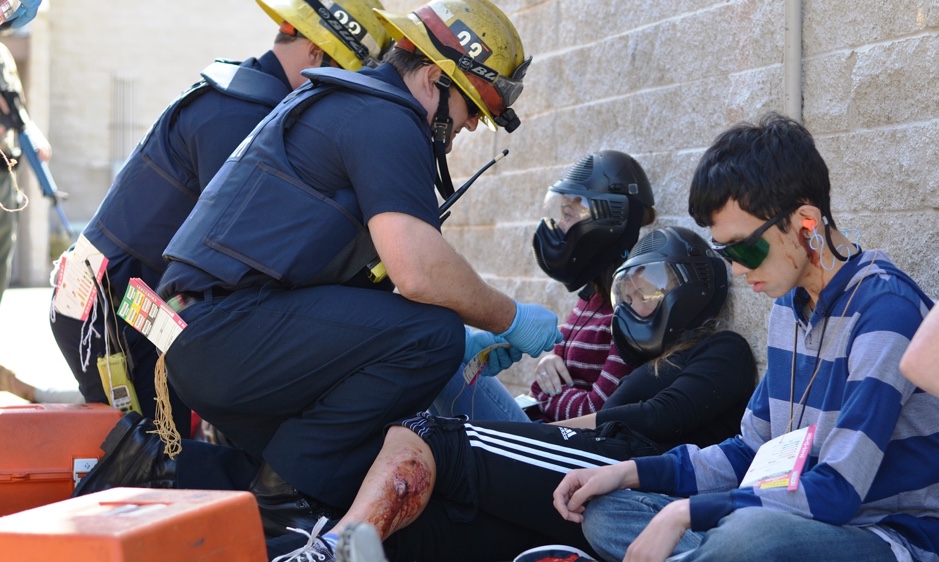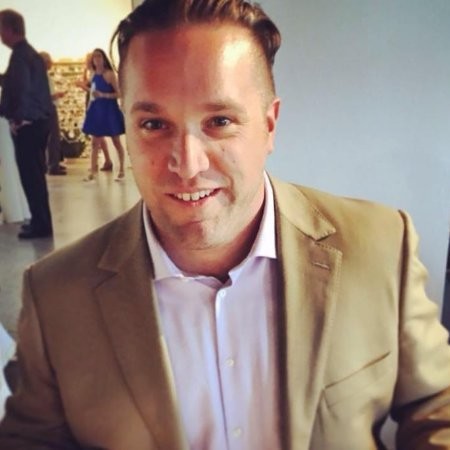How to Develop a Mass Casualty Incident Simulation
Mass Casualty Incident Simulations are rapidly becoming a core training exercise for EMS organizations and medical systems. How does one plan for and execute a high quality, large scale medical simulation Mass Casualty Incident Training event? Today Matthew Charnetski, MSMS, NRP, Director of Simulation Learning at NYIT at Arkansas State University and Adjunct Faculty at Drexel University, takes a closer examination at how to create effective MCI simulations events, coordinating people, systems, moulage, victims, and debriefings.
Medical Simulation has been used in military, pre-hospital, and wilderness applications for decades. As best practices in healthcare simulation have developed and been refined, simulation has grown in its use in healthcare applications across the board. In recent years, performance of medicine in these austere environments has become a necessary domain for more and more healthcare providers. With greater and greater frequency, large scale, atypical, mass casualty incident simulations are being performed around the country. With this increase in need and visibility, the requests are likely to keep increasing.
Mass casualty events can be intense and rewarding. They also can seem simple to set up on the face of it, but quickly the logistical work and planning pile up. Time runs short when there are so many pieces to move! So how does one best prepare for these events? Utilizing the core elements of setting up a smaller simulated event, we can build upon the structure with only a few core differences.
Sponsored Content:
Start with the “Why?” to Give Stakeholders an Achievable Frame
Why exactly is the event being planned? In response to recent events? Because another agency nearby engaged in such training or for upcoming Accreditation or Licensure? There are myriad possibilities for why an organization may need to put together a MCI simulation. Knowing the underlying causes and needs will create a frame around the training objectives. Additional “ideas” that come up from the group along the way will need to fit into this frame, or be tabled for next time. This frame will act as a limiting border to your exercise and will help to clarify what to plan and what areas to avoid. Next, give your team a leg-up by reviewing the memories of your teammates to consider previous large scale simulated events in terms of successes and failures.
The why also helps to identify which stakeholders will need to be present for the initial event to be a success. As an intersection point for so many healthcare providers, emergency management organizations, and other emergency services — simulation professionals are uniquely suited to see the bigger picture and recommend who should be involved and in what capacity. Of course, your group could start with the stakeholders and develop a training plan but because MCIs are so big, it is unlikely your group will have all the stakeholders at the table at the first meeting. The recommendation is to start first with a smaller version of whats possible as this will provide for a more manageable initial event, and if successful, also attract others through word of mouth for the next larger event.
Once the why is established, learning objectives and organizational goals easily follow — which are obviously vital to the creation and planning of any event or educational intervention. The specific participants and the skillsets they will need to demonstrate will flow naturally after the frame of why has been agreed upon and the necessary stakeholders are at the planning table.
Sponsored Content:
Questions to Consider for an MCI Simulation
- What skills need to be performed?
- Will casualties need to be transported?
- Is hospital report part of the process?
- Are the participants expected to use their call-back procedures?
- What kind of deployment of resources is anticipated?
- How many participants are expected?
- What time does the event start?
- How many iterations of the event will there be?
- What is the level of supporting staff? Where will everyone park
- How are non-simulated emergencies handled?
- What affect will this have on actual medical response services, if any?
- Will there be small group debriefings as well as large group debriefings?
- What debriefing style will be utilized and are all educators properly trained in those techniques?
Visualize and mentally simulate the event in your minds, what do you see, hear, and experience? Anticipate every eventuality by imagining through the event from soup to nuts to determine where pinch points may be. Each piece of logistical information can adversely affect events on the day. One should anticipate as much as possible in order to have as few things to adapt to as possible.
Realism Takes Time, So Find the Middle Way
Moulage is fun. Smoke machines are cool. But special effects also takes time and resources. Consider the degree of realism that is reasonably attainable and valuable given the resources and logistical limitations. Realism can substantially increase learner engagement. There are equal reasons to include and exclude high degrees of realism. Consider logistics, levels of learners, and objectives to help determine the level of realism that is important.
If the simulation is meant to prepare providers for the horrors of some of these events specifically, find ways to insert the sights, sounds, and smells of these events. Consider though that if the exercise has thousands of casualties and there is one sole Simulation Specialist to apply moulage, high level of special effects may be unreasonable.
Focus on the Learners with Educators for Every Level
Level of learner can be a sticky wicket… Particularly when looking to put together large scale events, everyone comes with their own set of priorities and expectations. Including educators of every profession that may be participating can be key in creating an event that runs smoothly and offers every participant something valuable.
Slow is smooth. Smooth is fast. Fast is good. The goal of any simulated event is to meet the learner where they are and work with them to improve their knowledge, skills, and abilities as they relate to their arena of expertise and performance. The more a Simulation Educator or Specialist involves various professionals in the early stages and guides them to build a robust, relevant, efficient, and effective simulation, the more likely the event is to succeed and deliver what it intends. Just as importantly, the smoother it goes, the more likely one is to be invited back or to do more events in the future!
Debriefing at Scale Has Unique Needs
Simulation Debriefing is a core requirement for successful learning and is a crucial area to just “wing it”. Frustrated educators who end up just throwing down their clipboard and yelling at learners in front of the group will reduce the willingness of participants to return to future events for fear of failure’s public reprimand. In mass casualty events, and in particular interprofessional mass casualty events, debriefing often requires even more planning and practice than a normal simulated event. Discuss with the stakeholders and those that will be present at each level, and for the branches of the whole. Adhering to a specific debriefing style across the entire event, along with ensuring debriefers are well versed in that style, will provide for a better learner experience as they go from unit debriefing to group debriefing.
Secure Enough Time for the Team to Create a Successful Event
There is a tendency to treat curriculum design and event planning with the same adaptability of patient care. While learners may be unpredictable, with enough time to prepare the learning environment itself should not be so. Sweat the small stuff. The more eventualities that are planned and accounted for, the more smoothly the entire event will go off, so start months ahead of time! Set meaningful but attainable goals matched with timelines along the way. Take time to build upon every step of the process and the event will run more smoothly day of, just like your smaller simulation events!
Simulation Education Professionals are not the only people that are likely to be involved in the planning an execution of mass casualty events. However, Simulation Professionals are likely to have the most insight of and activity behind the scenes. Being the simulation professional will allow one to speak to all of the moving parts of these events, help manage expectations, and deliver the high-quality simulation experience to best prepare learners for the environments in which they may need to operate.
Subscribe to Our Free Newsletter for Future MCI Simulation Tips!
Today’s article was guest authored by Matthew Charnetski, MSMS, NRP, Director of Simulation Learning at NYIT at Arkansas State University and Adjunct Faculty at Drexel University. The last 20-ish years have been a strange whirlwind from Iowa to Antarctica, Kazakhstan to Arkansas of Wilderness and Critical Care Paramedicine, Information Technologies Support, and Healthcare Simulation Operations and Curriculum Design.
Have a story to share with the global healthcare simulation community? Submit your simulation news and resources here!
Mr. Matt Charnetski PhD(c), MS, NRP, CHSOS, CHSE has been in and around healthcare for his entire life. Academically he started with a BA in Biology from Grinnell College, a Masters in Medical and Healthcare Simulation, and is currently a PhD candidate at Maastricht University in the Netherlands. Geographically, he spent most of his life in and around Iowa, punctuated by time spent in East Africa, Antarctica, wandering the earth, Kazakhstan, Arkansas and now landing in New Hampshire. Mr. Charnetski is currently the Director of Simulation Based Education and Research at Dartmouth Hitchcock Medical Center in Lebanon, NH. Prior to this, Mr. Charnetski was the founding Director of Simulation and an Assistant Professor at Nazarbayev University in Nursultan Kazakhstan and the founding Director of Simulation Learning at NYIT – Arkansas in Jonesboro, AR. Professionally, Mr. Charnetski ha had a winding path through Logistics, Search and Rescue, IT, EMS, and various levels of Simulation to arrive at what he describes as “the best and strangest career I’ve ever had.” He is actively involved with SSH on the Internal Relations Committee and with INACSL in the review of some of the current standards of best practice. Mr. Charnetski also serves as Secretary of the Board of Directors of SimGHOSTS.
Sponsored Content:



















